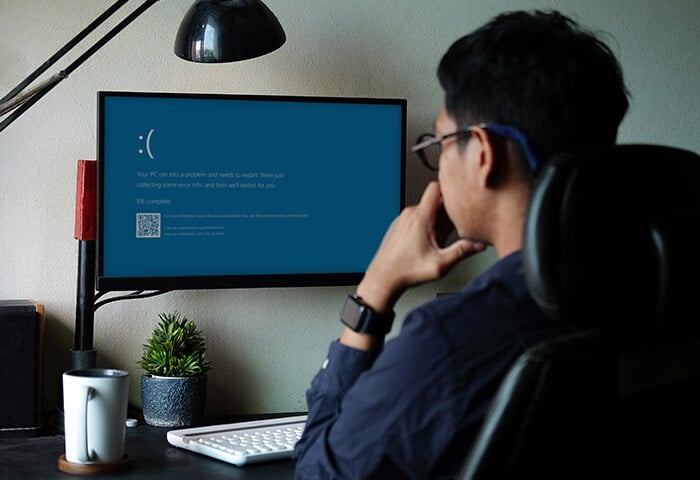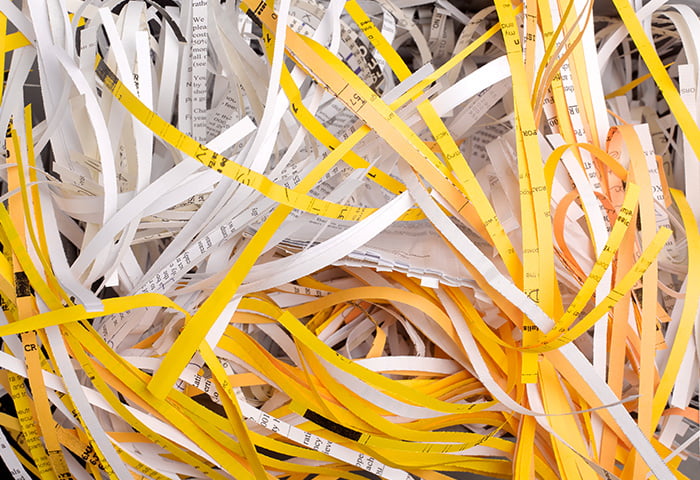How to transfer your files from PC to PC
Migrating your files from one PC to another can seem like a daunting process, especially when you’re transferring files from an old PC to a new machine — but it doesn’t have to be. We’ll walk you through the best ways to transfer files in Windows 10 and 11. Most of these methods will work with earlier versions of Windows, too.
1. Cloud storage: OneDrive, Google Drive, or Dropbox
Using a cloud storage service like Google Drive, OneDrive, or Dropbox to transfer files from PC to PC has the advantage of not requiring any additional hardware tools to get the job done. All you need to do is sign up to your service of choice, upload your files to the cloud from one computer, and then download them from the other computer to complete the transfer.
 You can use Google Drive to transfer files from one computer to another.
You can use Google Drive to transfer files from one computer to another.
With many cloud storage services offering as much as 15GB free storage, there’s practically no limit on the size of files that you can upload — but you may want to boost your Wi-Fi signal strength to ensure a fast and stable internet connection.
In addition to file sharing sites like WeTransfer, all of the services mentioned above are reliable and trusted options, but Microsoft’s OneDrive may be most convenient for Windows users due to its compatibility with other apps in the MS suite. If you use the Google suite, then Google Drive is a great cloud storage option to help you move files.
2. External hard drive
An external hard drive or other removable storage device can allow you to port large volumes of files from one PC to another quickly, easily, and securely across wired USB connections. Using high-capacity external storage hardware to clone your hard drive lets you migrate the entire contents of a PC in one go. And you’ll be able to store a copy of all your data as a back-up.
Like internal computer hard disks, you can now get SSD or HDD external hard drives, each of which has their own pros and cons. Both will do the job of file transfer and back-up just fine, although if you’re ready to splash the cash for a removable solid-state drive with enough storage, it may be more convenient as a PC to PC transfer tool due to faster solid-state read/write speeds.
 An external hard drive can help you store files and then transfer them to another computer.
An external hard drive can help you store files and then transfer them to another computer.
3. Transfer cable
With a USB or SATA cable to connect two computers together, you can transfer files directly from PC to PC by copying and pasting from one hard drive to another. This method removes the need for cloud storage or an external device and enables lightning-quick transfers — especially if both PCs have USB 3.0 ports, which are much faster than their USB 2.0 predecessors.
Although using a transfer cable to move files means you’re not reliant on an internet connection or expensive storage hardware, it does mean the computers need to be physically close enough to connect via a cable, which may not be practical in some cases.
4. PCmover from Laplink
Now that Easy Transfer has been discontinued in Windows 10 and 11, if you’re looking for an automated solution for migrating your entire PC to another computer, Laplink’s PCmover is probably your best bet.
There’s no free version, but as well as taking away the hassle of manually transferring files yourself, PCmover supports full user-profile migration, meaning all your data, applications, and settings will automatically be set-up on your new machine.
PCmover is not compatible with Windows XP or Vista, so it may not be possible to use it to transfer files from much older PCs to new computers. Unless you really value the convenience of having a software tool manage the process for you, you’re probably better off going with another solution.
5. Wi-Fi or LAN
If you’re transferring between computers that are both connected to the same network, it’s possible to set up a local area network (LAN) to share files via Wi-Fi. This can be a handy option because no additional hardware or software is required, and there’s no need to sign up for any third-party account or service.
There’s also no limit on the size or total volume of files you can transfer across LAN, though speed will be constrained by the strength and stability of your connection, and the bandwidth that your Wi-Fi can handle. If you’re looking to migrate the contents of an entire PC to another, this likely isn’t the most efficient method.
Can’t I just use Easy Transfer?
Easy Transfer isn’t supported in Windows 10 or 11. But if both your old and “new” PC have an older version of Windows installed, you can still use this tool to manage the migration of files, emails, user accounts, and settings using an external drive.
Here’s how it works:
Windows Vista and Windows 7
-
Insert a USB thumb drive or external hard disk into your old PC.
-
Click the Start menu, type Easy Transfer in the search box, and select the program from the search results.
-
Once Easy Transfer has launched, follow the in-wizard instructions according to your preferences.

-
After the transfer is complete, a pretty big “Windows Easy Transfer File from Old Computer.mig” file, will be saved on your USB drive.
-
Move the file on your USB drive to your new device.
Windows XP
If your old machine runs Windows XP, you’ll first need to copy Easy Transfer from your new PC. Here’s how:
-
Insert a USB thumb drive or hard disk into your new PC.
-
Launch Easy Transfer and select the option for An External Hard Disk or USB Flash Drive.
-
Go to This is My New Computer and then click No.
-
Select I Need to Install it Now to copy Windows Easy Transfer to the USB drive.
-
You can now insert the USB device into your old XP computer and run Easy Transfer from your external drive.
Don’t forget your saved games
While many modern games save gamestats in your Documents\My Games folder or synchronize them via the cloud on Steam or Origin, some games still hide the save files in their program folder, meaning you could lose all your progress when you wipe your PC.
To avoid hours of gameplay going down the drain, you’ll need to make sure you transfer your save files when migrating to a different PC. If you’re having trouble finding the save file, Google the game’s name along with “save game location” and you should find a blog, forum thread, or wiki that’ll show you where to look.

For other gaming-related resources, check out our guides to boosting your gaming PC and overclocking your GPU.
Clean your new PC for a fresh start
Once you’ve made sure all the files you need are safely transferred, get the most out of your new PC by using an advanced optimizer tool like AVG TuneUp to free up space, improve performance, and boost start-up speeds.
As well as scouring your hard drive for junk files and bloatware that may be slowing you down, AVG TuneUp automatically updates programs to make sure your apps run smoothly. Plus, it fixes and maintains your computer for faster, smoother, and slicker performance all around. Don’t let that “new PC feeling” fade away — try TuneUp for free today.

 You can use Google Drive to transfer files from one computer to another.
You can use Google Drive to transfer files from one computer to another. An external hard drive can help you store files and then transfer them to another computer.
An external hard drive can help you store files and then transfer them to another computer.















